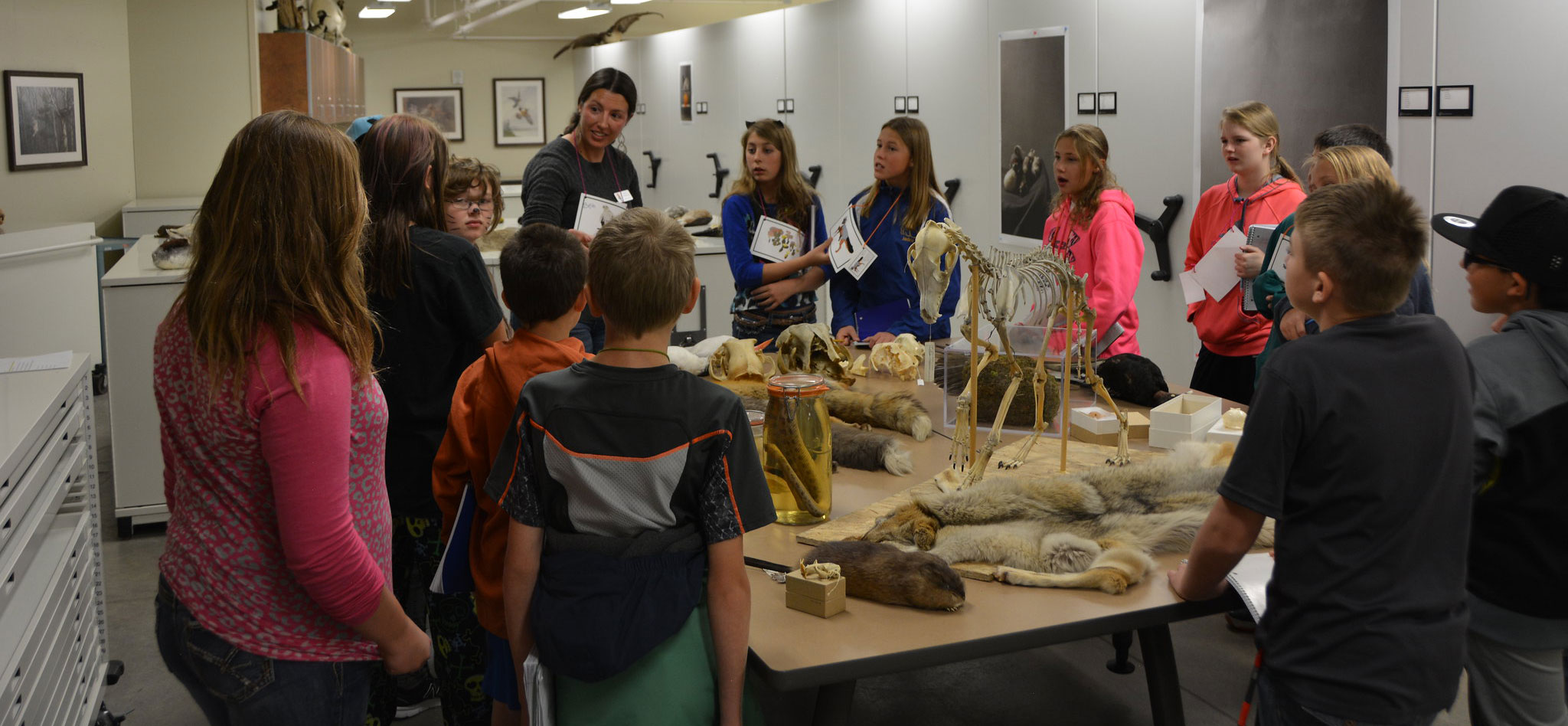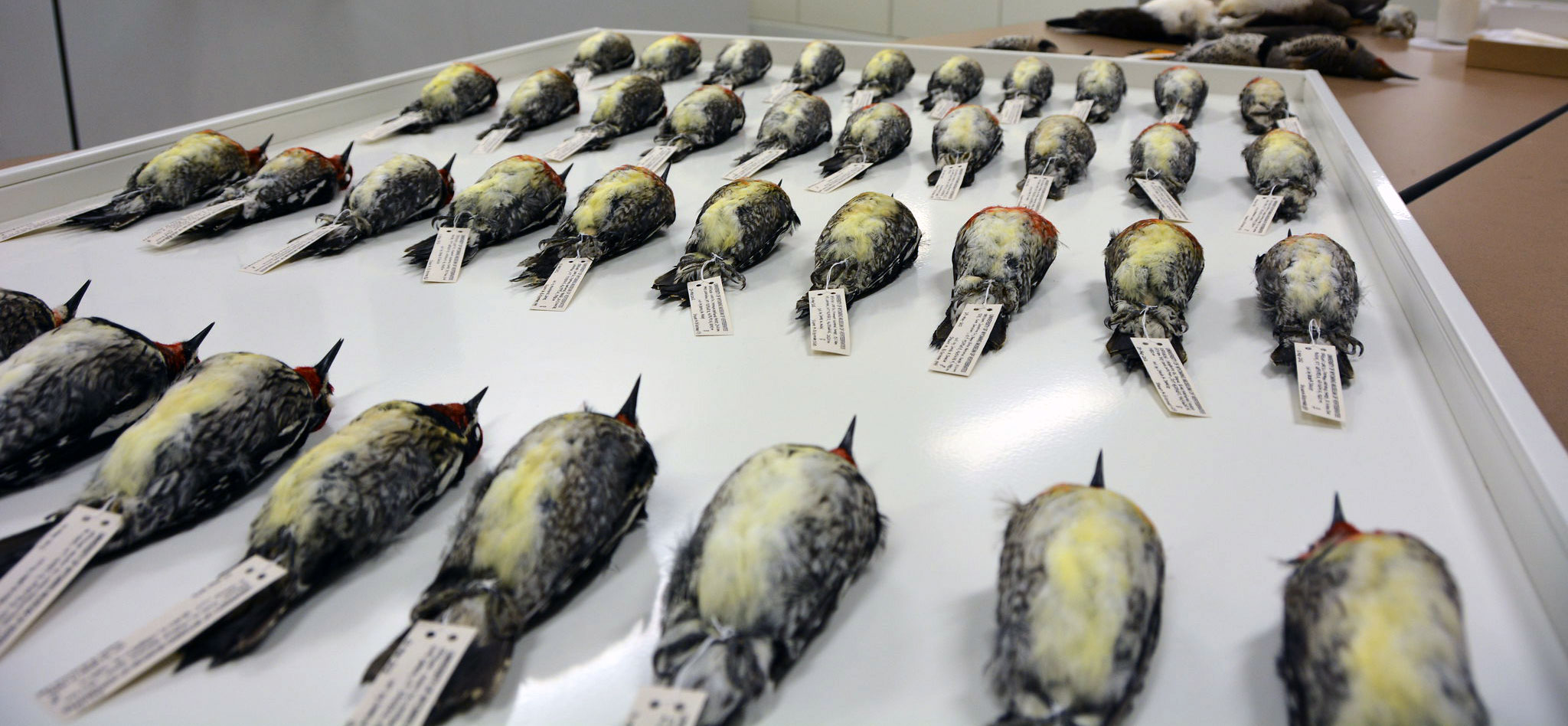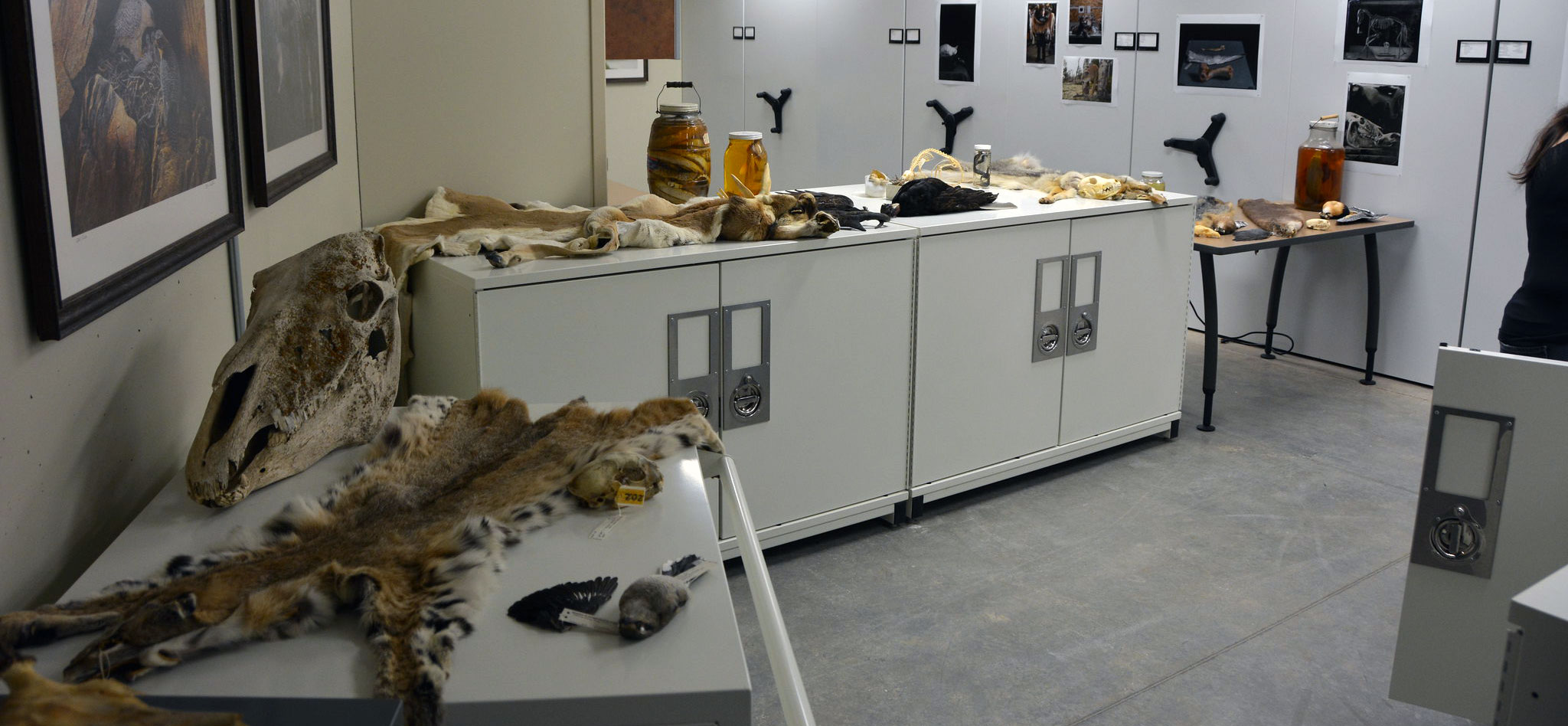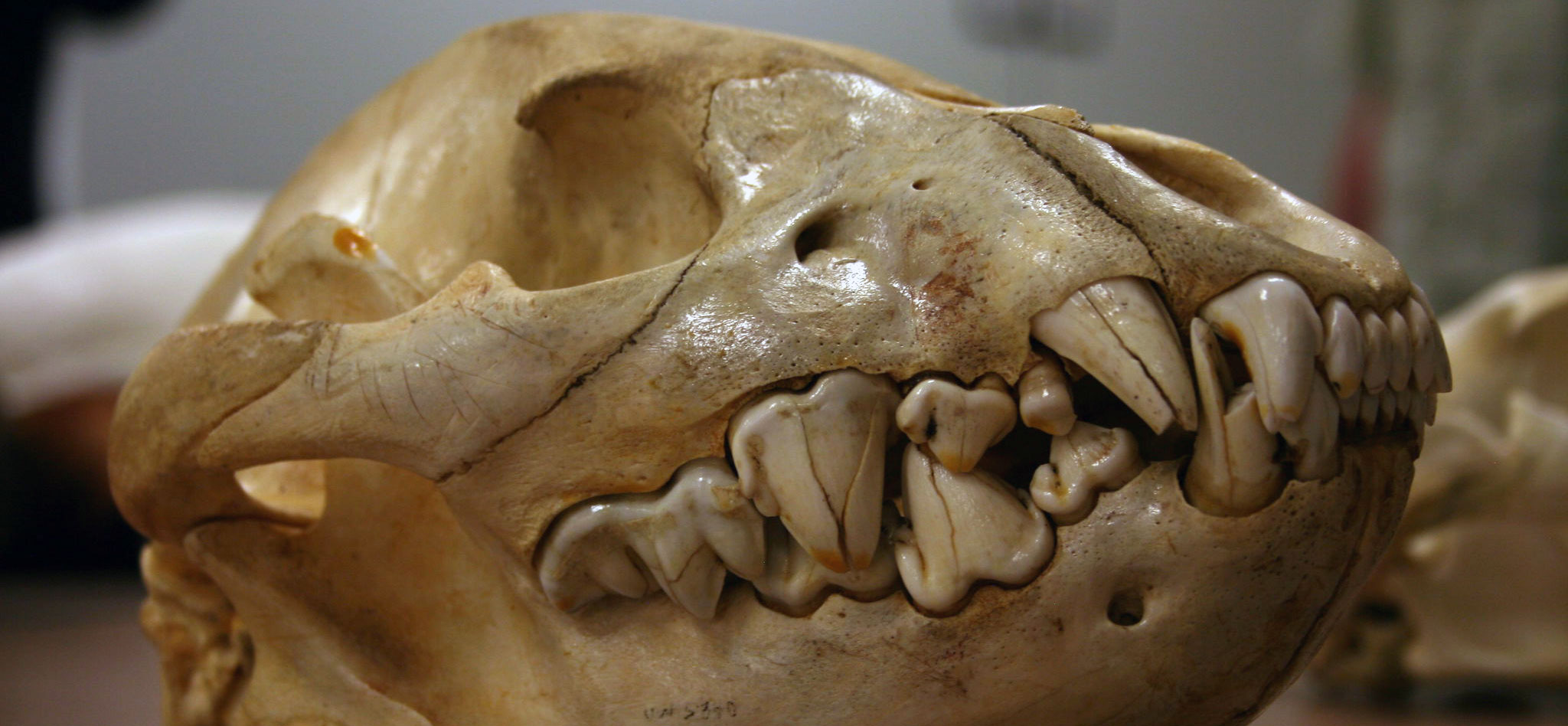
The University of Wyoming Museum of Vertebrates (UWYMV) is a rapidly expanding repository of historic and modern bird, mammal, amphibian, reptile, and fish specimens.
Our mission is to document and understand regional and global biodiversity through acquisition and investigation of collections to advance academic knowledge and public appreciation of the natural world.
QUERY THE UWYMV DATABASES
Collection
The University of Wyoming Museum of Vertebrates houses approximately 11,800 specimens in four separate collections: mammals, birds, reptiles and amphibians, and fish. In addition, the museum is home to a growing collection of tissues and anatomical parts (e.g. stomach contents, syrinxes).
Most of the historical specimens come from the Great Plains and Rocky Mountains. Additional significant historical collections come from the eastern and southern areas of the United States. State of the art facilities in the museum’s new home in the Berry Center have provided the Museum with large amounts of additional collections space, and the museum is currently undergoing rapid expansion in all areas.
The most common specimen types are skins and pelts, skeletons, and fluid preserved whole organisms. The bird collection also contains a small collection of eggs and nests, and a growing collection of spread wings.
History
The University of Wyoming Museum of Vertebrates began as an extension of the University Museum, founded in 1890, and originally housed in the Hall of Language (Old Main). Active collecting of extant vertebrates for the Museum began in 1896 under the curatorship of Wilbur C. Knight, the state geologist and Chair of Geology and Mineralogy in the School of Mines. The historical growth of the collection after Knight’s death in 1903 has been sporadic, dependent upon the interest and research of University of Wyoming students, faculty, and staff. During this time the museum went through long periods of inactivity.
The move of the University of Wyoming Museum of Vertebrates to the Berry Center in the spring of 2011 has opened up a period of renewed interest in the museum’s collections. Through active research, collaborations with affiliated scientists, and increased public participation, the Museum has entered into a stage of rapid expansion for all of its collections. The museum now consists of state of the art storage areas for both dry and wet collections. In addition, a tissue collection has been added to the University of Wyoming Museum of Vertebrates, as well as multiple preparatory labs for skeletons, skins, and fluids.





